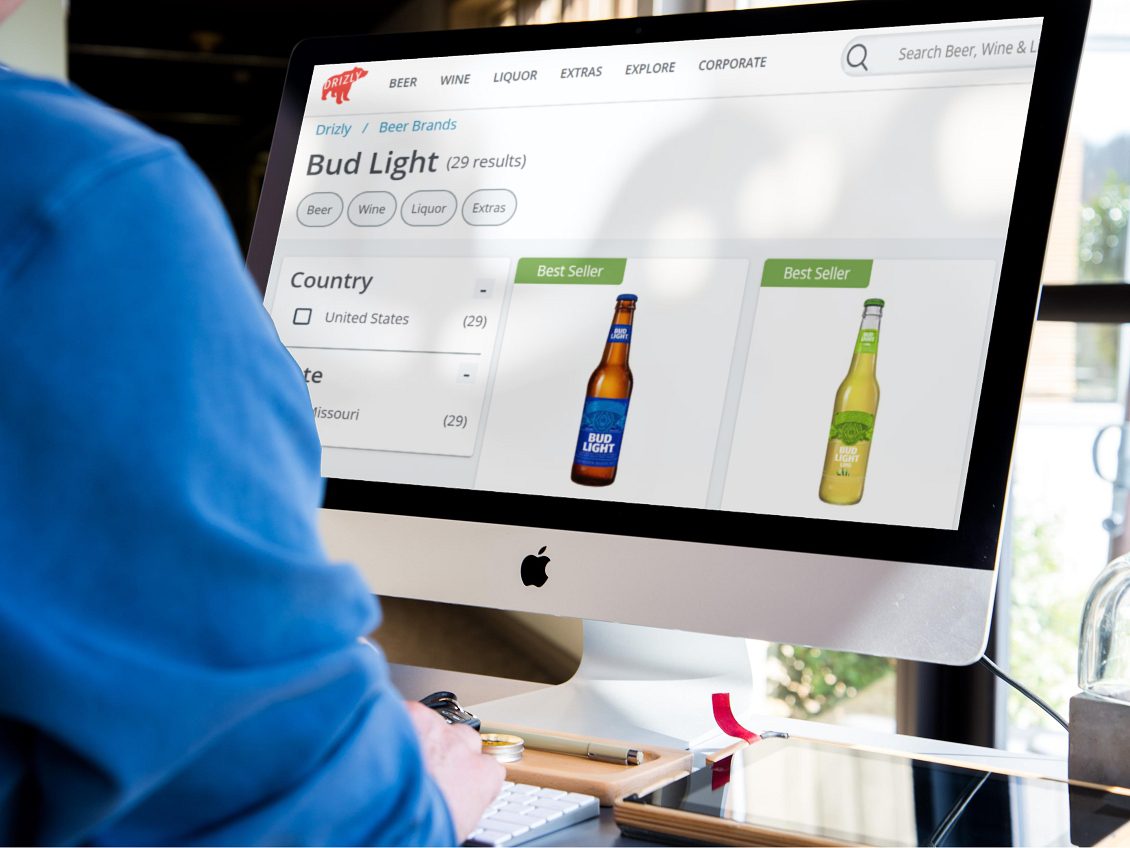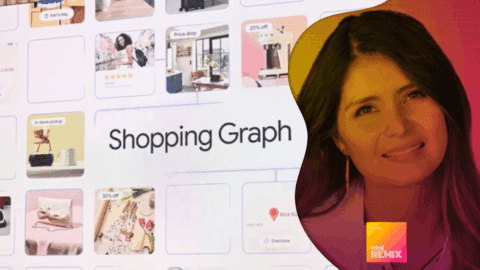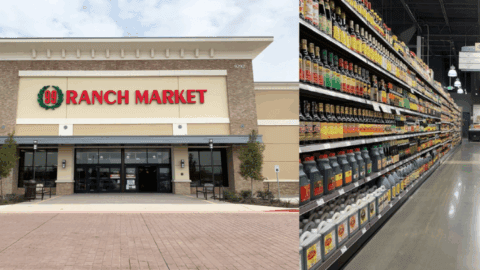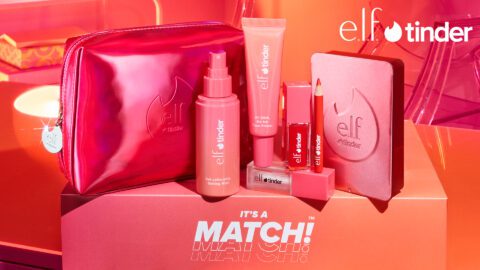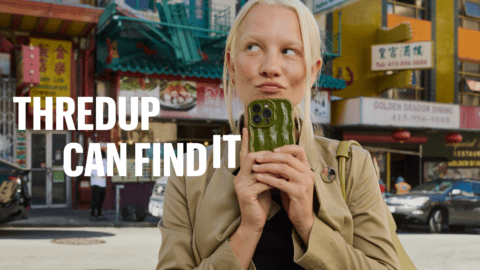As many as 28% of U.S. consumers don’t realize that they can buy beer online, which helps explain why only 6% of the adult population has purchased beer through that channel, according to Anheuser-Busch and Mintel. But while the online market currently makes up less than 1% of beer sales, it has plenty of room for growth — there’s potential to reach 10% to 20% of total beer sales in the U.S., according to Carolyn Brown, Head of eCommerce, North America for ZX Ventures, the global growth and innovation arm at Anheuser-Busch InBev. ZX Ventures contributed 10% to the brewing company’s 2018 revenue growth — another indication that online beer sales are building up a head of steam.
In an interview with Retail TouchPoints at Shoptalk 2019, Brown revealed more about the online beer opportunity as well as the many hurdles that remain:
- AB InBev’s online growth strategy through retail partners such as Walmart and Kroger, as well as e-Commerce delivery players Instacart and Drizly;
- The company’s role in generating a full customer path-to-purchase for retailers through data insights;
- Present challenges within online alcohol sales, including last mile logistics, the “three-tier system” of alcohol distribution and lack of brand awareness;
- The role of personalization in beer sales going forward; and
- How alcohol can be a major trip driver and basket builder for overall online grocery sales.
Retail TouchPoints (RTP): Typically, e-Commerce isn’t top-of-mind when you think of alcohol sales. What has it been like to develop an e-Commerce operation, and what have been the challenges?
Brown: There’s two big challenges that we have. One challenge is making people aware that you can buy beer online, and the other challenge is because we’re a beer company, we can’t own a DTC channel.
We can’t sell directly to consumers because of the three-tier system, which means that everything in the alcohol industry — beer mostly, but wine and spirits as well — has to go from the supplier, which is us, to a distributor, who then sells to a retailer. Only a retailer can sell to a consumer.
Because we can’t own that channel, we can never own the direct relationship with the consumer, so we’re reliant on retailers or marketplaces that we work with. We work with Walmart and Kroger and marketplaces like Instacart, Drizly and Minibar. We’re also working with Amazon, which adds a new layer altogether. We can never own the one-to-one with the consumer, but we’re trying to learn as much as we can about the online shopper so that we can share those insights with retailers and help them drive the beer category more.
RTP: How do you develop those partnerships with retailers and marketplaces?
Brown: In some cases, such as Walmart, we’re leveraging our relationship that we already had with them on the brick-and-mortar side. ZX Ventures can share high-level insights on what we know about the online shopper, and that can spearhead the relationship. Now we’re working with Walmart on crafting a full path-to-purchase for the consumer, hearing back from them on what their shoppers are actually clicking on and what other categories are often included in their beer basket. We put this information together and give them a story about the digital buyer, while gathering insight from their physical locations. That’s everything from ‘What does the digital shelf look like?’ to ‘What are the in-store activations delivering?’
We’re also doing a lot to understand the beer category consumer, and not just our AB consumers. Category leadership and category growth are huge factors for us. We’re understanding the different segments of the online shoppers we see — some people care about convenience, some care about price, some care about ratings or reviews and finding the rarest beer possible.
From a brand perspective, we make sure that Budweiser, Bud Light, Golden Road, Goose Island and all our other craft brands are portrayed in the best possible light. Just like how we spend tons of time and effort making our in-store displays and shelf sets look nice and customer-friendly, we want to make the online shelf look the same, with lots of content. The content we put online can be more in-depth, and we can use video content, which we can’t use in-store, so it’s helping retailers understand that we’re not just the typical in-store Anheuser-Bush that you know us as.
RTP: How do you feel personalization fits into the Anheuser-Busch brand now?
Brown: My ideal dream state for e-Commerce for beer is that I know you buy a Stella Artois 12-pack once a week and I want to be able to serve you an ad or a promotion for a discount to that — whereas another shopper might buy a different six-pack of craft beer once a month, and she just enjoys it by herself or with one other person. I want to be able to give a one-to-one promotion or ad to any customer that we’re indirectly touching.
There are certain things we’re doing to drive awareness of beer sales online. We can interact with shoppers if they sign up during a festival, at one of our brewpubs or at a bar event where they’re sampling some of our beer, so we do have a lot of customer data that we can use.
It’s about deeply understanding what are those occasions and why are people buying. We know that some of our brands or segments of the beer category fit into certain occasions more than others. We can provide those insights back to retailers and say, ‘I know that for the in-home family meal occasion it’s very effective when you sell beer next to pasta and red sauce.’
RTP: How will you handle the challenges of delivery, particularly in terms of cooling?
Brown: Within that, the logistical piece of selling beer online is really difficult. It’s a heavy product, it can’t really be shipped since a lot of it comes in glass bottles. Even in cans, it can’t really go too far outside of the retailer footprint due to the three-tier model. Almost all of the beer delivery services today are hyper-localized. Amazon only sells beer online through Prime Now and Fresh, and those are both hyper-localized. Even Walmart’s delivery business mostly offers beer within a small local footprint, so most sales would come through click-and-collect.
Part of it is because A) It’s super-expensive to get it further away from the store, and B) There’s franchise law that often surrounds beer. The cost makes it prohibitive for retailers to push delivery boundaries. Again, it’s not up to us.
We’ve seen companies like Drizly, Minibar and Instacart popping up in more urban center areas, because they can optimize that last mile delivery. They might get three or four orders from the same neighborhood and they could feasibly get to those shoppers in an hour. In Tier 2 cities, we’re seeing more of the click-and-collect model pop up, because it doesn’t require the store to do any extra work besides pick from the actual shops. In a lot of ways, it’s often a self-fulfilling prophecy of the type of markets they’re in.
RTP: How would you assess Anheuser-Busch’s online growth potential going ahead?
Brown: We want to see the e-Commerce business double year-over-year-over-year-over-year. This is still a really small piece of the business, and of the overall beer industry today, but from a long-term growth perspective, we want online to be driving the growth of the beer category.
We’ve seen through several studies in the U.S. and the UK that online beer sales actually does drive incremental basket size. From a forward-looking vision standpoint, it could come to be 10% to 20% of total beer sales in the U.S., as well as a massive piece of online grocery sales. It’s a huge trip driver for in-store grocery sales, so why wouldn’t it be that way online?
It’s not today because of awareness, last mile logistics challenges, the three-tier system, but I see retailers leaning more into getting past some of those challenges. Retailers first tackled salty package snacks because it was easy, they’re lightweight and they’re easy to ship, etc. But they hesitated to tackle produce because it was very challenging to live up to the in-store expectations.
With beer, it’s the same way. It’s a challenging legal situation; it’s a challenging consumer situation with the emergence of a massive craft beer market and SKU proliferation. But in the last 12 to 18 months, retailers have come to us a lot more, saying that they want to lean into online growth instead of shying away from it.
I think that there’s a lot of catch-up to the amount of digital content that’s already surrounding selling products online. In the beer category especially, people are so passionate about beer. People now go online to check reviews, read about beers and seek out tasting notes. Once we and retailers together can figure out how best to utilize all that content and data within it, we can provide recommendations and make an online user journey as seamless as possible.
RTP: Can you tell me a little more about ZX Ventures, and how it came about?
Brown: ZX Ventures started in 2015, and I joined six months after that, so I was there from the start for the e-Commerce team. In the beginning, it was about setting up the shape of the organization and figuring out what we’re going to tackle. The last two years have been about identifying key retailers and marketplaces that were willing partners we could learn with. At the end of the day, it has to be a two-way relationship between us and a retailer, or us in a marketplace. We have to be willing to work with each other and provide insights back and forth as well.
The initiatives took shape by gathering data — what people are buying, how they’re shopping, what they’re clicking on and searching and what types of digital shelves resonate with people. That was between 24 and 12 months ago.
2018 was about — Now that we have this wealth of data, what do we do with it? It’s identifying cross-merchandising opportunities across different categories, such as merchandising beer with other categories such as Walmart cider. We’re looking at targeted media — if I know that you’re a Bud Light buyer, we should be targeting you with a different message then someone who’s a Stella buyer. In a lot of cases with our brands, we were just using more broad-sweep targeted audiences.



